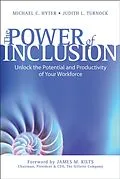There is an enormous amount of wasted potential within
organizations today because most do not adequately tap in to the
wealth of human capital available to them. Most organizations
believe that they are meritocracies, but that is a myth that masks
the real situation of unequal opportunity that exists in most
firms. Exclusionary tendencies are built into leadership,
management, and human resources practices that perpetuate unequal
opportunity. Most companies "sort and select," hiring
others most like themselves, and focus training and development on
those who are identified as high potential.
This book makes a business case for a new inclusive model of
human resource development, driven by the demands of increasingly
diverse workplaces and continuing expansion of the global economy.
It demonstrates that people who succeed often acquire their talent
because of the development attention they have received, and
it shows how to create a culture of inclusion and development to
unlock employee potential and productivity.
The authors ' approach -- developing talent in
all employees and aligning human resource systems and senior
leadership commitment with that goal -- is a response to a
business challenge facing corporate North America today. The
patterns of exclusion and preference that limit human potential are
universal; this book offers management insights for any corporate
audience serious about maximizing productivity in the competitive
global economy.
Autorentext
Mike Hyter is President and COO of Novations, Inc. a human capital training and consulting firm providing solutions to increase the capacity of individuals and organizations worldwide. He was most recently President and CEO for Novations/J. Howard & Associates, a division within the Boston-based Novations, Inc. that specializes in diversity and inclusion consulting. Hyter's work with executive leaders in Fortune 1000 companies has resulted in organization-wide diversity and development initiatives that have enhanced the business objectives with those companies. He has also helped those firms expand their diversity efforts into their subsidiaries in Europe. Hyter has published articles in Inc. magazine, the Handbook of Business Strategy, Director's Monthly, and Profiles in Diversity Journal, and speaks widely on the topics of development and diversity to groups such as Linkage Inc., the Conference Board, the Minority Corporate Council Association, Executive Leadership Council, and American Society for Training & Development. Contact Mike Hyter via href="http://www.novations.com/">www.novations.com or at 617-254-7600. Judith Turnock is an attorney, experienced executive coach, and inclusion expert. She is the founder and president of Hunter Management Group and a frequent speaker and facilitator at conferences and seminars on personal development as well as diversity and inclusion, to groups such as Linkage Inc., the Conference Board, the Executive Leadership Council, and the Minority Corporate Council Association. She has published articles in Forbes and Diversity and the Bar, and is the co-author of Cracking the Corporate Code: The Revealing Success Stories of 32 African-American Executives (AMACOM 2003). Contact Judith Turnock via href="mailto:jlthmg@aol.com">jlthmg@aol.com or at 212-222-3206.
Zusammenfassung
There is an enormous amount of wasted potential within organizations today because most do not adequately tap in to the wealth of human capital available to them. Most organizations believe that they are meritocracies, but that is a myth that masks the real situation of unequal opportunity that exists in most firms. Exclusionary tendencies are built into leadership, management, and human resources practices that perpetuate unequal opportunity. Most companies “sort and select,” hiring others most like themselves, and focus training and development on those who are identified as high potential.
This book makes a business case for a new inclusive model of human resource development, driven by the demands of increasingly diverse workplaces and continuing expansion of the global economy. It demonstrates that people who succeed often acquire their talent because of the development attention they have received, and it shows how to create a culture of inclusion and development to unlock employee potential and productivity.
The authors ’ approach — developing talent in all employees and aligning human resource systems and senior leadership commitment with that goal — is a response to a business challenge facing corporate North America today. The patterns of exclusion and preference that limit human potential are universal; this book offers management insights for any corporate audience serious about maximizing productivity in the competitive global economy.
Inhalt
Foreword by James M. Kilts.
Acknowledgments.
Introduction: The Business Imperative.
Chapter One. Two Models of Development.
Chapter Two. Overcoming Barriers to Development: Eliminating
Negative Treatment and Encouraging Quality Treatment.
Chapter Three: Managing Inclusion: Positioning All Employees for
Success.
Chapter Four. Strategic Leadership: The Sine Qua Non of
change.
Chapter Five. Aligning Human Resources with a Culture of
Development.
Chapter Six. Jump-Starting Inclusion: Establishing the
Infrastructure.
Chapter Seven. Inclusion in the Global Economy.
Chapter Eight. Measuring Progress and Demonstrating Results.
Afterword. Unleashing the Potential of Your Workforce.
Index.
